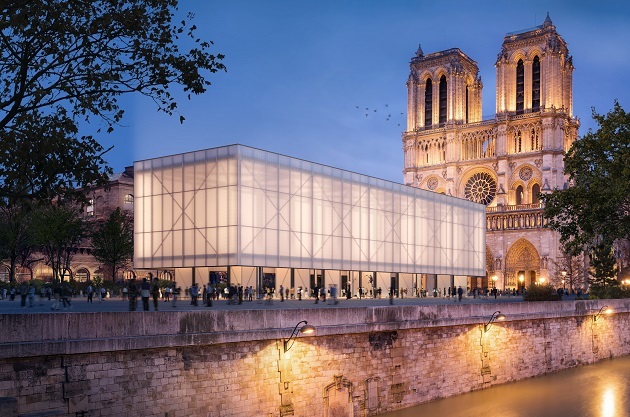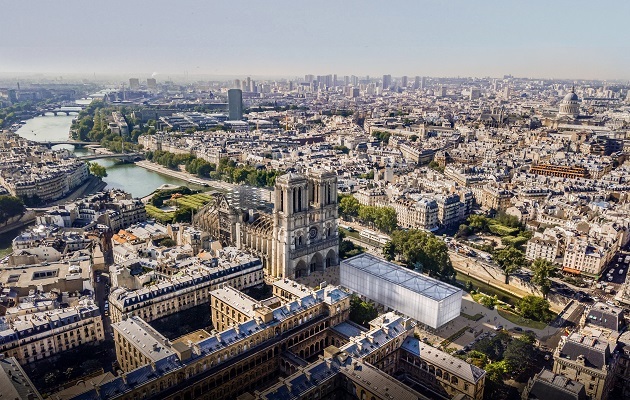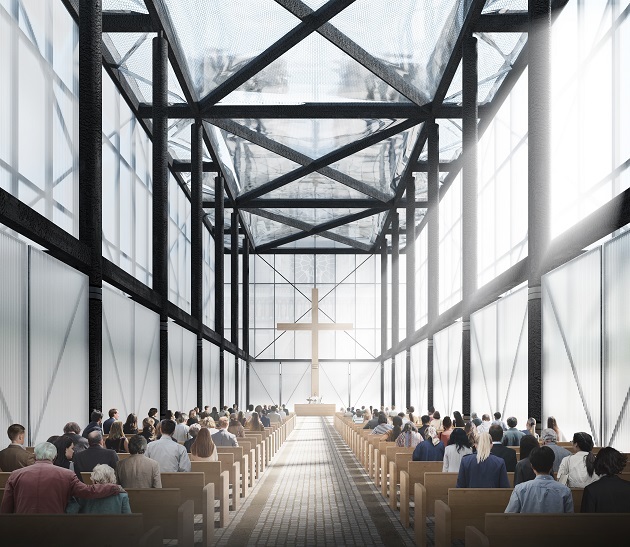 Notre-Dame proposal by Gensler
Notre-Dame proposal by Gensler
Just over three months since the fire that devastated the Notre Dame cathedral in Paris, Gensler has revealed a proposal for a temporary structure to allow the cathedral to return to use while under renovation.
The pavilion is designed to the same dimensions as the former cathedral and creates a nave that would allow religious services to start again, as well as providing space for performances.
The proposed structure would have a translucent quality, with an EFTE cushioned roof and polycarbonate walls allowing daylight into the space and providing a glowing addition to the cathedral when lit from within.
 The Notre-Dame proposal from above
The Notre-Dame proposal from above
The structural beams would be made of a sustainably sourced charred timber, providing functional strength while making reference to fire and continuation of the functions of the 850-year-old cathedral. “Charred timber, which is one of the oldest and most effective methods of protecting wood from fire, also symbolises that what once destroyed Notre-Dame will only serve to make it stronger thus expressing a language of rebirth and transformation,” explained Duncan Swinhoe, regional managing principal at the firm.
Gensler also intends the space to act as a hub for the community, with moveable panels allowing the space to be opened up or closed for services as required.
 The space set up for the mass service
The space set up for the mass service
The proposal is one of the earliest for a temporary structure to allow for continued use throughout the renovation, though joins a series of suggestions by designers made after the French prime minister announced that there would be an architectural competition for its eventual reconstruction. That announcement prompted a range of suggestions, some more fanciful than others – Norman Foster suggested that it should have a ‘contemporary’ spire, while Swedish firm Ulf Mejergren Architects mocked up a very unlikely swimming pool roof.
However, any proposal for work on the partial ruin will not be able to go ahead currently, with reconstruction works paused due to concerns about the levels of lead released into the surrounding area due to the fire. The fire caused the melting of several tonnes of lead in the roof, and French media has reported that levels of lead in the surroundings are much higher than normal acceptable levels. A group of activists has brought a lawsuit against the authorities, saying that they did not take action fast enough and put people at risk of potential lead poisoning. So far, the government has paused works until further safety precautions can be implemented.

















